6 Vertical Push Exercises for Shoulder Mass & Strength
You may have heard that to build “boulder” shoulders, you have to focus on front, side, and rear dumbbell raises.
That’s nonsense.
While those exercises have their benefits, the real key to building shoulder mass and strength is vertical push exercises.
These exercises train all three heads of your delts while also developing several other major upper body muscle groups, including your chest, arms, and upper back.
Which vertical press exercises work best? Here are my top six:
- Standing barbell overhead press
- Seated barbell overhead press
- Standing dumbbell overhead press
- Shoulder press
- Arnold press
- Machine shoulder press
In this article, you’ll learn why these exercises are so effective, understand how to perform them for maximum growth, and discover more tips to take your shoulder training to the next level.
Key Takeaways
- A vertical push exercise is a strength training movement where you press against resistance vertically (in an up-and-down direction).
- The best vertical push exercises are the standing and seated barbell overhead press, standing dumbbell overhead press, Arnold press, and both the dumbbell and machine shoulder press.
- Vertical push exercises build upper body muscle, enhance functional strength, and improve shoulder stability.
- Vertical push exercises primarily train your shoulders and triceps, though they also help develop your upper chest and upper back.
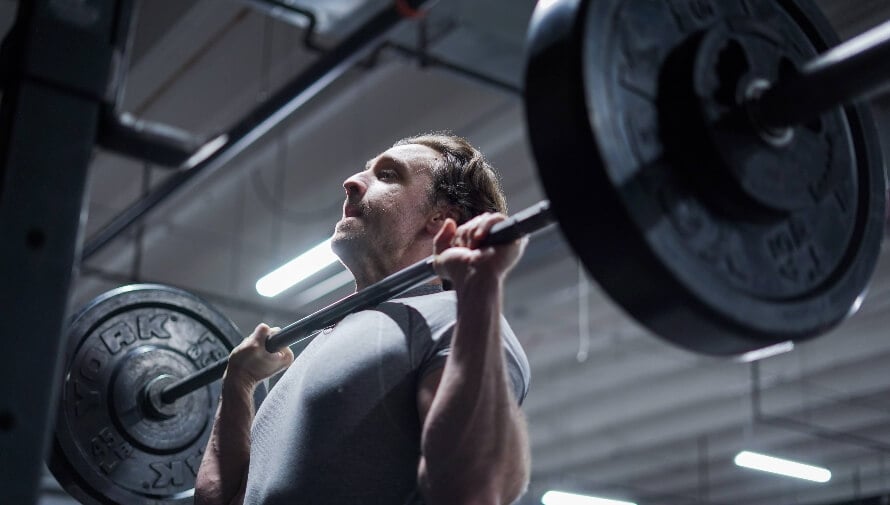
- What Is a Vertical Push Exercise?
- 6 Best Vertical Push Exercises for Shoulder Mass and Strength
- Benefits of Vertical Press Exercises
- Muscles Worked by Vertical Push Exercises
- FAQ #1: Are dips a vertical push exercise?
- FAQ #2: Are lateral raises a vertical push exercise?
- FAQ #3: Can you do vertical push exercises at home?
Table of Contents
+What Is a Vertical Push Exercise?
A vertical push exercise (or “vertical press exercise”) is any strength training movement where you press against resistance vertically (in an up-and-down direction). In almost all cases, this means pressing a weight overhead.
The only exceptions are bodyweight vertical push exercises like the pike push-up or handstand push-up. In these exercises, you position your body almost perpendicular to the floor, supporting your weight on your hands.
You lower your body by bending your elbows, then push through your arms to return to the starting position:
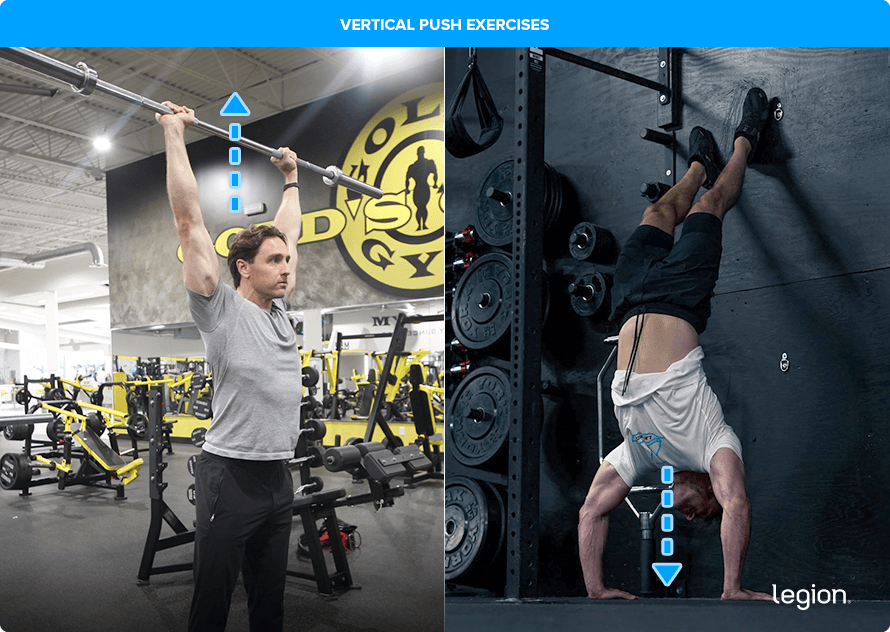
6 Best Vertical Push Exercises for Shoulder Mass and Strength
1. Standing Barbell Overhead Press
Why: The standing barbell overhead press is the king of pushing shoulder exercises. It trains your front, side, and rear delts, as well as the rotator cuff, giving you a full shoulder workout in one exercise. Plus, because it allows you to lift heavy weights and progress regularly, it’s perfect for adding mass and building strength in your shoulders.
How:
- Set a barbell in a rack at the same height as your upper chest.
- Grip the bar with a shoulder-width grip and your palms facing away from you.
- Unrack the barbell, step backward, and plant your feet just outside of shoulder width.
- Push the bar toward the ceiling until your arms are straight.
- Reverse the movement and return to the starting position.
RELATED: The Best Full Shoulder Workouts for Building Size and Mass
2. Seated Barbell Overhead Press
Why: The seated barbell overhead press is great for building shoulder mass because it doesn’t require as much core stability as the standing version. This allows you to lift heavier weights and progress faster, making it one of the best upper body vertical push exercises for packing on shoulder size and strength.
How:
- Set up an upright bench in a squat rack or use a seated barbell overhead press station.
- Set a barbell in the rack at about shoulder height when standing.
- Sit down and grip the bar with a shoulder-width grip and your palms facing away from you.
- Unrack the barbell and lower it to your collarbone.
- Press the bar toward the ceiling and return to the starting position.
3. Standing Dumbbell Overhead Press
Why: Research shows that the standing dumbbell overhead press trains all three heads of the deltoids more effectively than most other overhead presses. This makes it an excellent vertical press exercise for building balanced shoulder mass and strength.
How:
- Stand upright with your feet shoulder-width apart and a dumbbell in each hand.
- Hoist the dumbbells up so you’re holding them just above your shoulders with your palms facing away from you.
- Press the dumbbells toward the ceiling until your arms are straight.
- Lower the dumbbells and return to the starting position.
4. Shoulder Press
Why: The seated dumbbell shoulder press is more stable than the standing version because the bench supports your back. This makes it easier to lift heavier weights safely, aiding muscle and strength gain.
How:
- Sit on an upright bench and hold a dumbbell in each hand, resting them on your thighs.
- Hoist the dumbbells up so you’re holding them just above your shoulders with your palms facing away from you.
- Press the dumbbells toward the ceiling until your arms are straight.
- Lower the dumbbells and return to the starting position.
5. Arnold Press
Why: The Arnold press contributes to well-rounded shoulder mass by emphasizing your side delts more than other overhead pressing variations. In other words, it’s a great vertical push exercise for those looking to add width to their delts.
How:
- Sit on an upright bench and hold a dumbbell in each hand, resting them on your thighs.
- Hoist the dumbbells up so you’re holding them just in front of your shoulders with your palms facing you.
- Press the dumbbells straight overhead while rotating your wrists until your arms are straight and your palms are facing away from you.
- Reverse the movement and return to the starting position.
RELATED: The Arnold Split: Build Muscle Like Schwarzenegger
6. Machine Shoulder Press
Why: The machine shoulder press requires less coordination than most other pushing shoulder exercises, which makes it a solid vertical press option for beginners. It’s also a good choice for advanced weightlifters looking to add more shoulder volume (sets) at the end of a workout when they’re already fatigued, as it’s generally less taxing than free-weight vertical push exercises.
How:
- Adjust the shoulder press machine’s seat so the handles are about the same height as your ears, then sit down.
- Grip the handles with your palms facing away from you, then press them toward the ceiling until your arms are straight.
- Reverse the movement and return to the starting position.
Benefits of Vertical Press Exercises
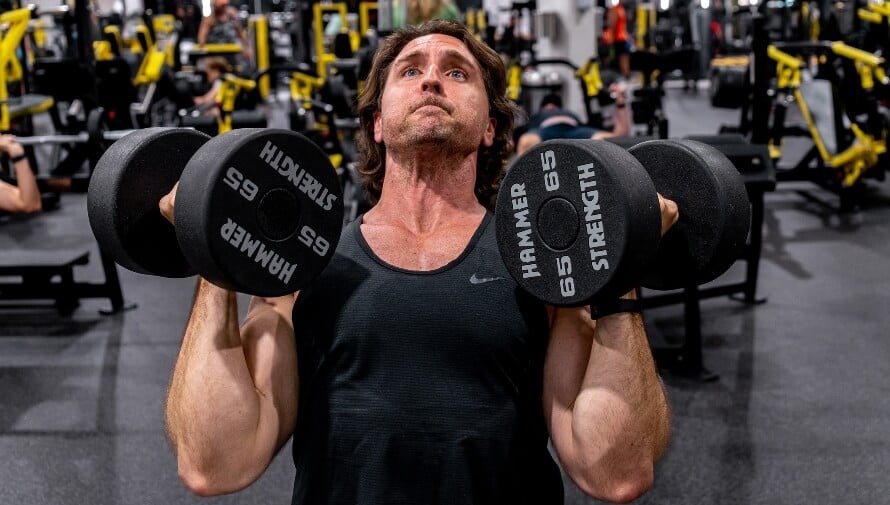
Increased Upper Body Size
Vertical pressing exercises train most major muscle groups above you waist, including your shoulders, triceps, upper back, and upper chest, making them ideal for gaining all-around upper body size.
They’re also perfect for applying progressive overload (gradually increasing the weight you lift over time), which is essential for building muscle and strength.
Improved Functional Strength
Vertical pushing strength is crucial for countless everyday activities, such as lifting objects overhead, placing things on high shelves, or pushing something above you. Vertical push exercises help you build the muscles involved in these movements, so they feel more manageable.
Enhanced Shoulder Health
The intricate network of muscles, tendons, and ligaments in your shoulders gives them an impressive range of motion, but this flexibility also makes them more vulnerable to injury compared to other joints.
Vertical push exercises strengthen the muscles that stabilize and support the shoulder, like the deltoids and rotator cuff. Training these muscles improves shoulder stability, making the joint more resilient and less prone to injury.
RELATED: The 7 Best Ways to Fix and Prevent Shoulder Pain
Muscles Worked by Vertical Push Exercises
The main muscle worked by exercises that involve pushing vertically are:
- Deltoids (front, side, rear)
- Triceps
- Pectoralis major (primarily the “upper pecs”)
- Trapezius
Vertical pushes also train your rotator cuff muscles and core to a lesser degree.
Here’s how the main muscles worked look on your body:
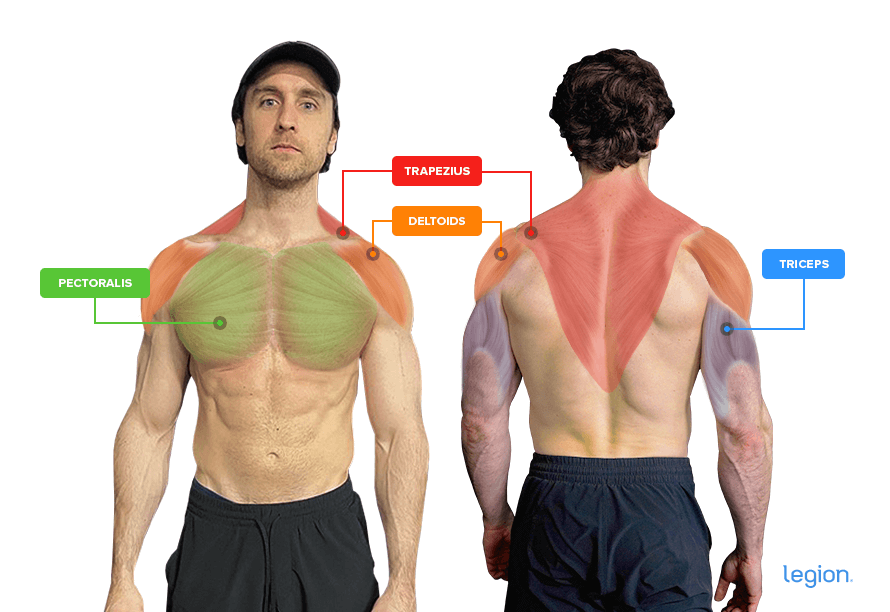
FAQ #1: Are dips a vertical push exercise?
No, dips are a horizontal push exercise. Vertical push exercises involve pressing weight overhead, like the overhead press or shoulder press. That said, dips and vertical push exercises train many of the same muscles, especially the shoulders.
READ MORE: An Expert Guide to the Muscles Worked by Dips
FAQ #2: Are lateral raises a vertical push exercise?
No, lateral raises aren’t vertical push exercises. They target the side delts, which you also work during vertical pushes, but they involve lifting the arms out to the sides rather than pressing overhead.
READ MORE: How to Do Lateral Raises: Form, Mistakes, & Variations
FAQ #3: Can you do vertical push exercises at home?
Yes, you can do vertical push exercises at home. If you’re a beginner, the pike push-up is an effective vertical push exercise that mimics an overhead press using your body weight. Here’s how it looks:
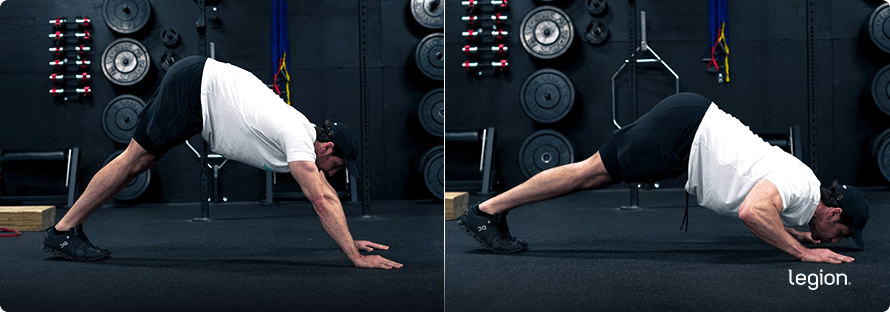
If you’re more advanced, try the handstand push-up. It’s a tougher vertical press that requires significant shoulder strength and balance:
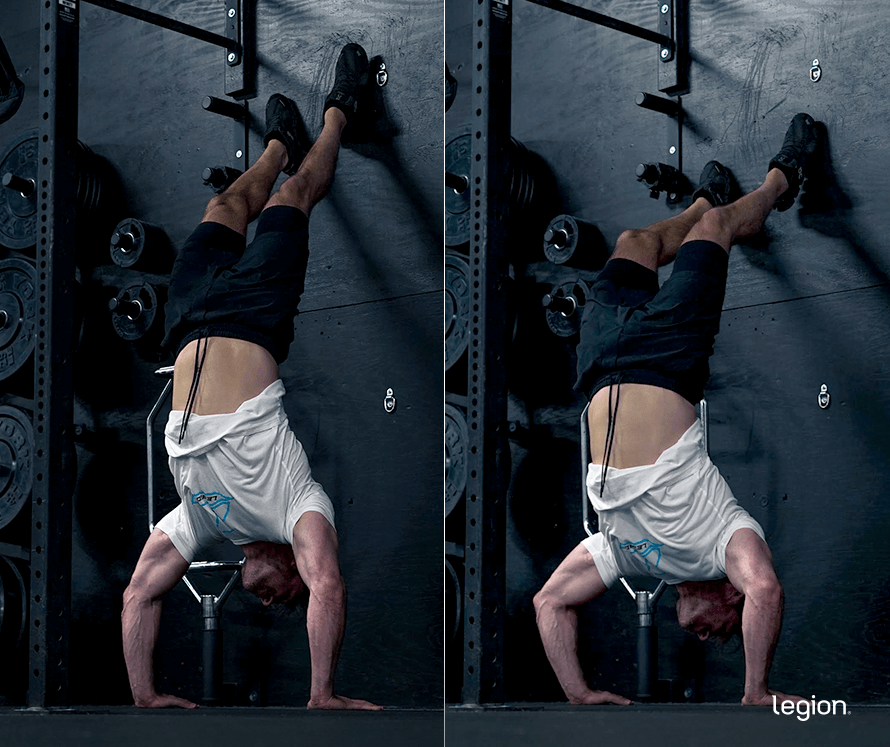
The post 6 Vertical Push Exercises for Shoulder Mass & Strength appeared first on Legion Athletics.
https://ift.tt/PioMvXA October 28, 2024 at 06:00PM Legion Athletics
Comments
Post a Comment